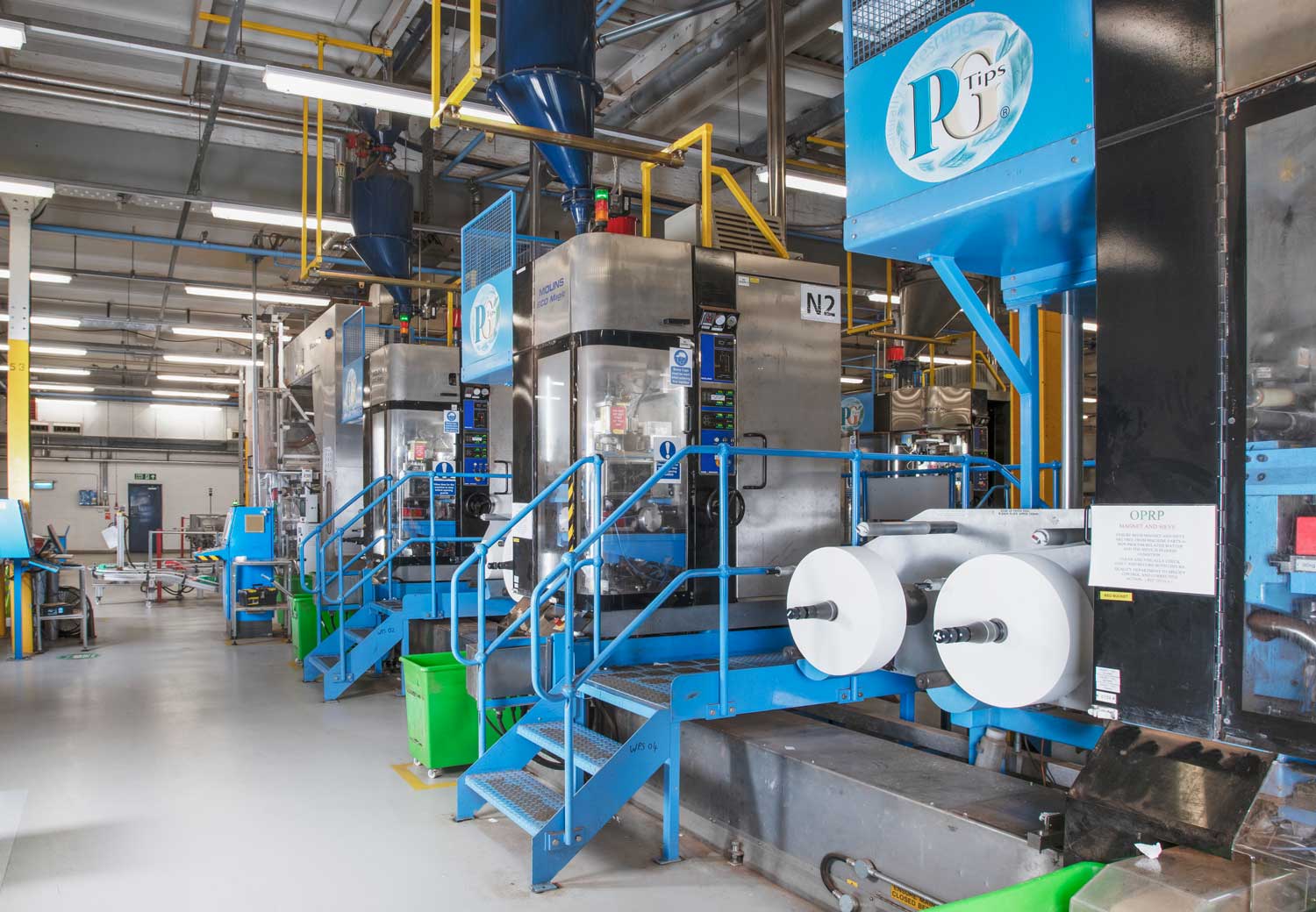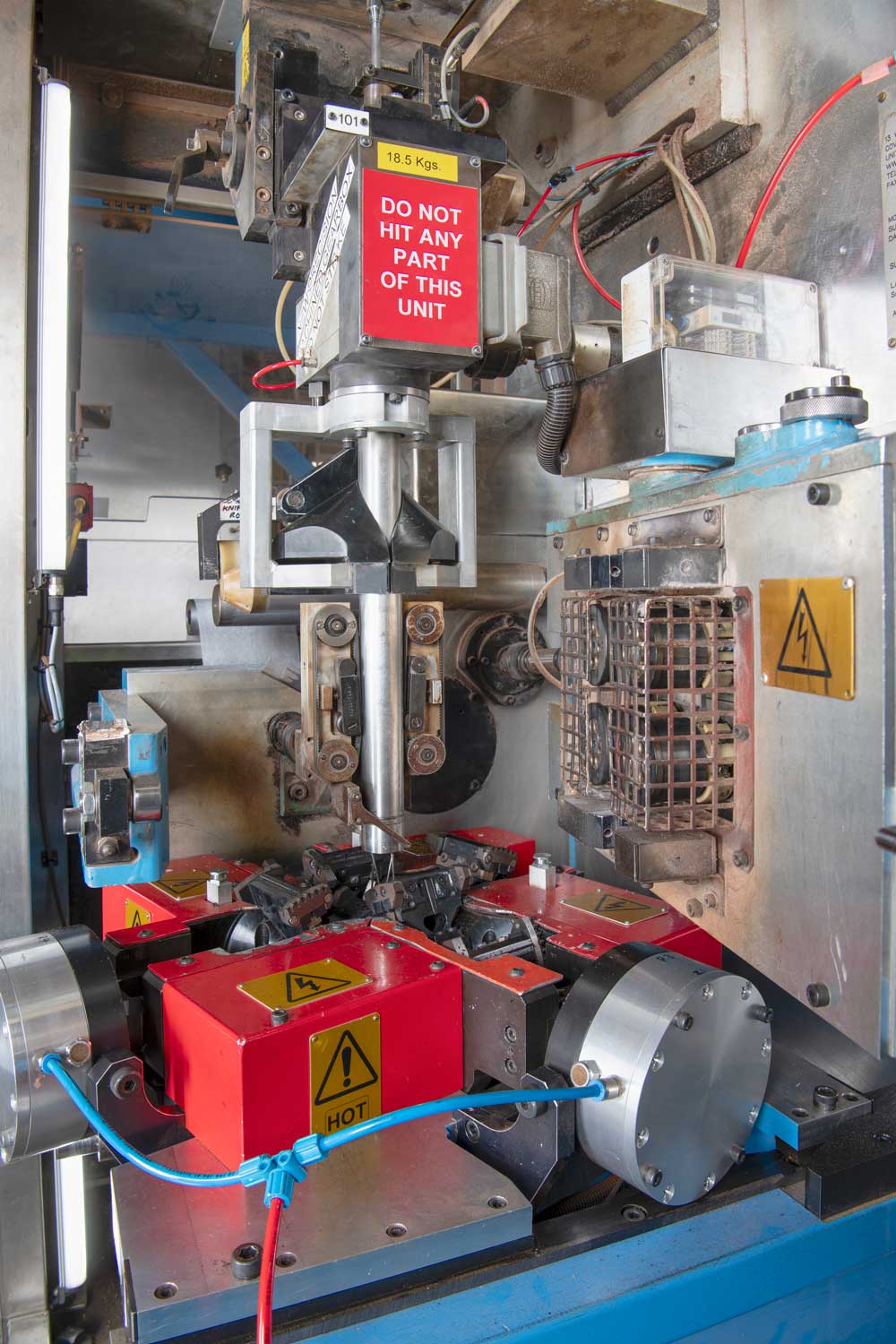
Science Museum Group © The Board of Trustees of the Science Museum
In 1869 a young tea dealer named Arthur Brooke opened his first tea house, on Market Street in Manchester. With everyone from wealthy industrialists to factory workers enjoying a cuppa, business was good and his company, Brooke Bond, grew into a leading tea supplier. In 1923 they opened a tea factory in Trafford Park, with the Manchester Ship Canal providing a convenient connection to the global tea market. In 1930 they introduced a new blend: Pre-Gest Tea, better known today as PG Tips.
A century from its opening, the Trafford Park PG Tips factory, now owned by Lipton Teas, is one of the largest teabag factories in the world. From loose-leaf blends to the introduction of teabags, tea has changed a lot in that time. In 1989 the tea market was rocked by Tetley’s introduction of the round teabag, which quickly became a best seller. To get ahead of the competition, Brooke Bond spent £25 million and four years developing their own revolutionary teabag. With the help of scientists at Imperial College they experimented with different shape teabags, such as cylinders, cubes and even top hats, before deciding that a pyramid would make a better brew. The three-dimensional pyramid gave the tea leaves more space to circulate, quickly brewing a good, strong cup of tea.
Launched in 1996, the PG Tips pyramid bag quickly caught the public’s attention and made up a fifth of Britain’s teabag sales by 1999. Brooke Bond adapted their Trafford Park factory to manufacture the pyramids, installing new custom-built machines made by Mollins of Coventry, allowing the factory to produce 35,000 tea bags per minute.

Science Museum Group © The Board of Trustees of the Science Museum
Nestled at the heart of these machines, surrounded by tea delivery chutes, spools of paper and conveyer belts, was the ‘clever bit’ of the machine: a teabag making module. A thousand times every minute, this incredible piece of precision engineering folded a paper tube into a pyramid shape, filled it with a dollop of tea, then cut and sealed it shut to make a three-dimensional pyramid teabag. However, after three decades, the pyramid teabag making machinery is getting old and teamaking habits have changed. Pyramid teabags are being replaced by square teabags, containing a new blend designed to brew in just 60 seconds—better suited to our hectic modern lifestyles. The pyramid teabag machines are being retired and recycled. All but one.

Science Museum Group © The Board of Trustees of the Science Museum
With the help of staff at the factory, the museum has acquired a pyramid teabag making module for the collection, preserving an example of this fascinating high-tech machinery for the future. It’s been carefully boxed up and transported to the Science and Innovation Park for storage, until we decide what the next chapter in its story will be.
We’re often asked how we decide which things to collect for the museum. For us the pyramid teabag machine was a really attractive object for lots of reasons. A precision engineered piece of high technology, it’s a fascinating piece of science and engineering in its own right. Part of the story of Trafford Park, the world’s first industrial estate, it’s an innovative piece of modern industry with strong Manchester connections, that fits well with our other collections. Furthermore, it’s connected to something very familiar and relatable to many people—teabags—but also reveals how incredible technology often lays behind apparently simple everyday things. For us, it’s a perfect blend.
And lastly, after all, who can say ‘no’ to a cuppa?